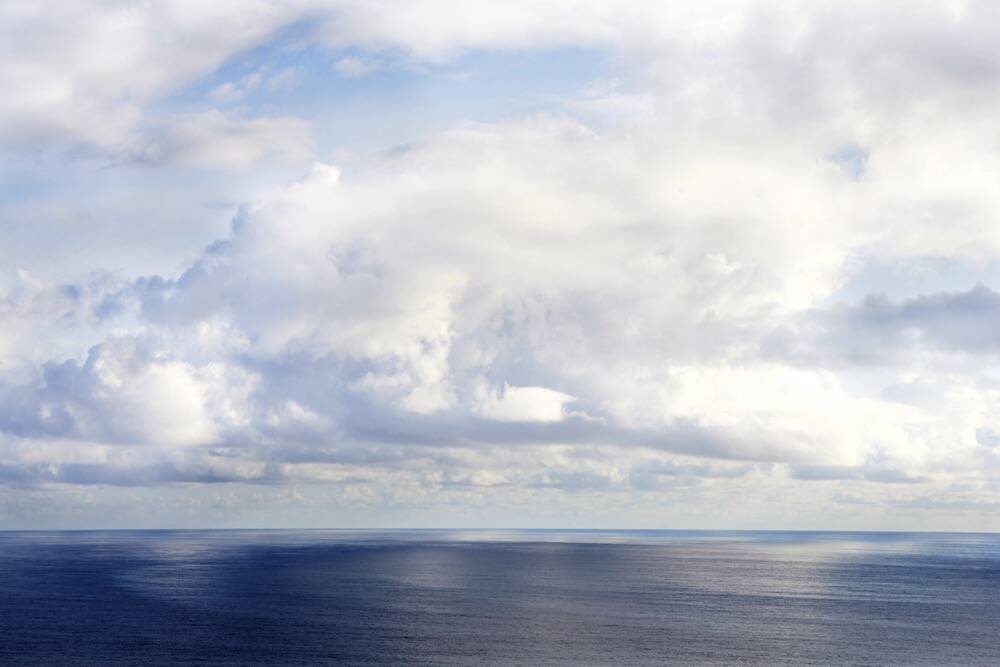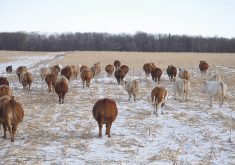These forecasts are starting to sound a bit repetitive. Fall trying to hold on, a couple of weak areas of low pressure, cooling trend late in the forecast period, with the chance of a storm – but confidence is low, and that storm system never does materialize as expected!
As it turns out, this forecast period is looking very similar. The main difference is that our average temperatures are getting colder and colder.
We start this forecast period with an area of low pressure exiting northern Manitoba and another area of low pressure tracking by to our south through the north-central U.S. Off the West Coast, we find a large area of low-pressure dropping southwards. The energy from this is forecasted to break apart as it moves inland over the next few days, resulting in several areas of low-pressure impacting parts of the Prairies.
Read Also

La Niña to fade early next year, neutral Pacific conditions likely, U.S. forecasters say
La Niña is expected to linger for another month or two before likely giving way to neutral Pacific conditions between January and March 2026, carrying a 68 per cent probability, the U.S. Climate Prediction Centre said on Thursday.
The first low is forecasted to develop over southern Alberta on Wednesday and then track northeastwards into northern Manitoba by Friday. The models show it being relatively weak with only a few flurries or light snow over the areas just north of the its track. The southerly flow ahead of the low will bring seasonable mild temperatures to the southern Prairies.
The weather models then show a second area of low pressure developing over the west-central U.S. on Saturday. This will quickly move northeast to cut through southern Manitoba late Saturday and Sunday. This system looks somewhat weak and should bring some clouds, showers, and flurries.
The last area of low pressure looks to be the strongest and has been predicted by the weather models for several days. Each model run treats the low differently. It’s forecasted to develop over the American southwest on Monday and to lift northeastwards into southern Manitoba and possibly Saskatchewan by Wednesday. This system has the potential to bring the first measurable snow to this part of the Prairies. As usual, it’s a long way off, and so far these lows have ended up staying to our south and east.
Alberta
This forecast period starts with an area of low pressure developing over southern half of Alberta. This will bring mild temperatures, with daytime highs in the 10 C range over southern regions and 5 C over central regions. Further north in the Peace River regions, temperatures will be cooler. Expect daytime highs in the -5 to -3 C range. There doesn’t appear to be much precipitation with this low. Western regions and east-central regions may see a few showers or flurries.
Things look to be fairly quiet over the weekend as a Gulf of Alaska low slowly pushes ashore over the Yukon. This low will help keep temperatures around average in the north and above over southern and central regions. Skies look to be partly cloudy with no significant precipitation expected. This pattern should continue into the first half of next week. There may be a bit of cool-down if the American southwest low does develop and lift northwards. That low could help pull cooler air southwards on its western side. Confidence in this part of the forecast is low.
Saskatchewan and Manitoba
These regions look to see a mix of sun and clouds over the next three days with temperatures running a good 6 to 10 C above average. An area of low pressure, forecasted to develop over southern Alberta on Wednesday, will bring some sun on Thursday with a chance of showers to both provinces as it tracks towards northern Manitoba. Best chance of precipitation looks to be over central regions.
Saskatchewan then looks to see quiet and mild weather over the weekend and into early next week. Over Manitoba, the weather models show a weak area of low-pressure sliding northeastwards out of the northwestern U.S. late on Saturday and into Sunday. This low will bring clouds and shower or flurries depending on the timing of the precipitation. More is likely in the overnight or early morning hours.
Once again, the forecast may become interesting by Tuesday or Wednesday. The weather models are showing an area of low pressure developing over the American southwest and then quickly lifting northeast. Temperatures ahead of this low look to cool toward more average values. Daytime highs by Tuesday or Wednesday are expected to be in the -2 to +2 C range.
There is the potential for this low to bring the first accumulating snowfall to southern Manitoba and parts of southern Saskatchewan around Wednesday, but as we have figured out, confidence in these systems this far out is low. There is some indication that it will be like the last couple of storms and will stay to our south and east. I’ll keep an eye on it and post an update early next week should the latest forecasts warrant it.
















